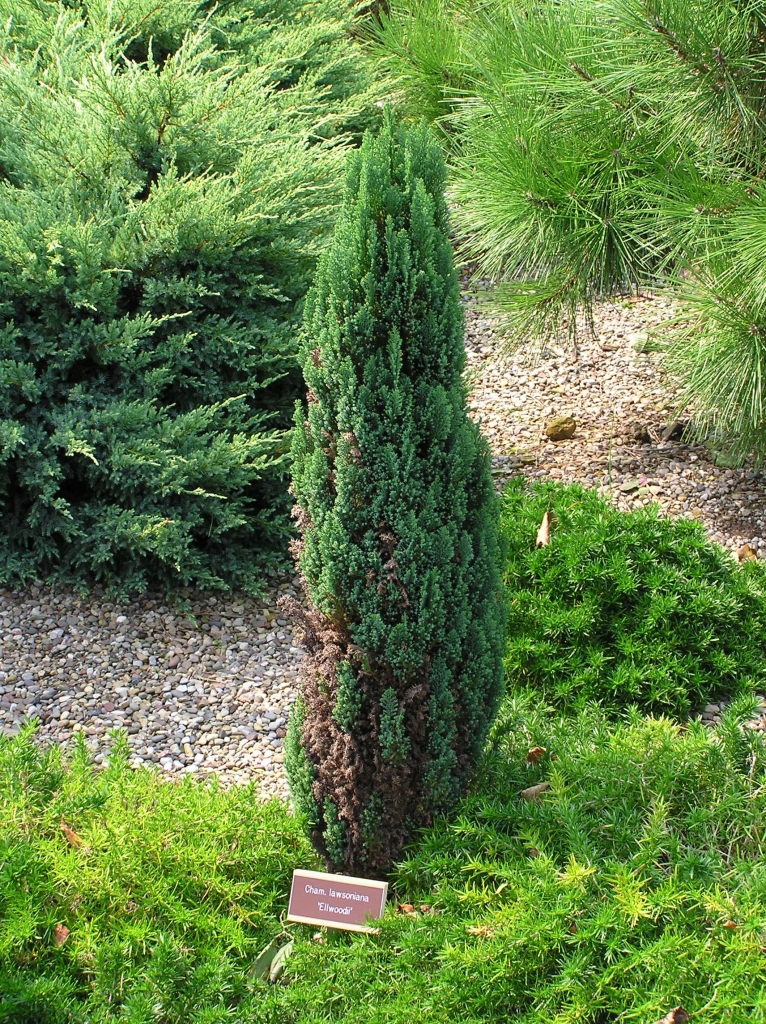Chamaecyparis lawsoniana 'Ellwoodii' is a staple of the nursery industry, a familiar, neat cone of bluish green juvenile foliage when young. It is also a good example of what becomes of a nice dwarf conifer if overzealously propagated. By taking only the strongest cuttings for propagation, the plants grown now are much more vigorous than originally intended. Plants grown in the 1920s would only grow to heights of 3 feet (1 m) or so after 25 years, all the while maintaining tight juvenile foliage. Now it's typical to see plants reaching heights of 4.5 feet (1.5 m) after only 10 years on to unbelievable dimensions of 15 feet (5 m) or more after 10 years with foliage coming close to adult form.
This cultivar originated as a self-sown seedling selected in 1915 by G. Ellwood, then chief gardener at Swanmore Park, Hampshire, United Kingdom.
